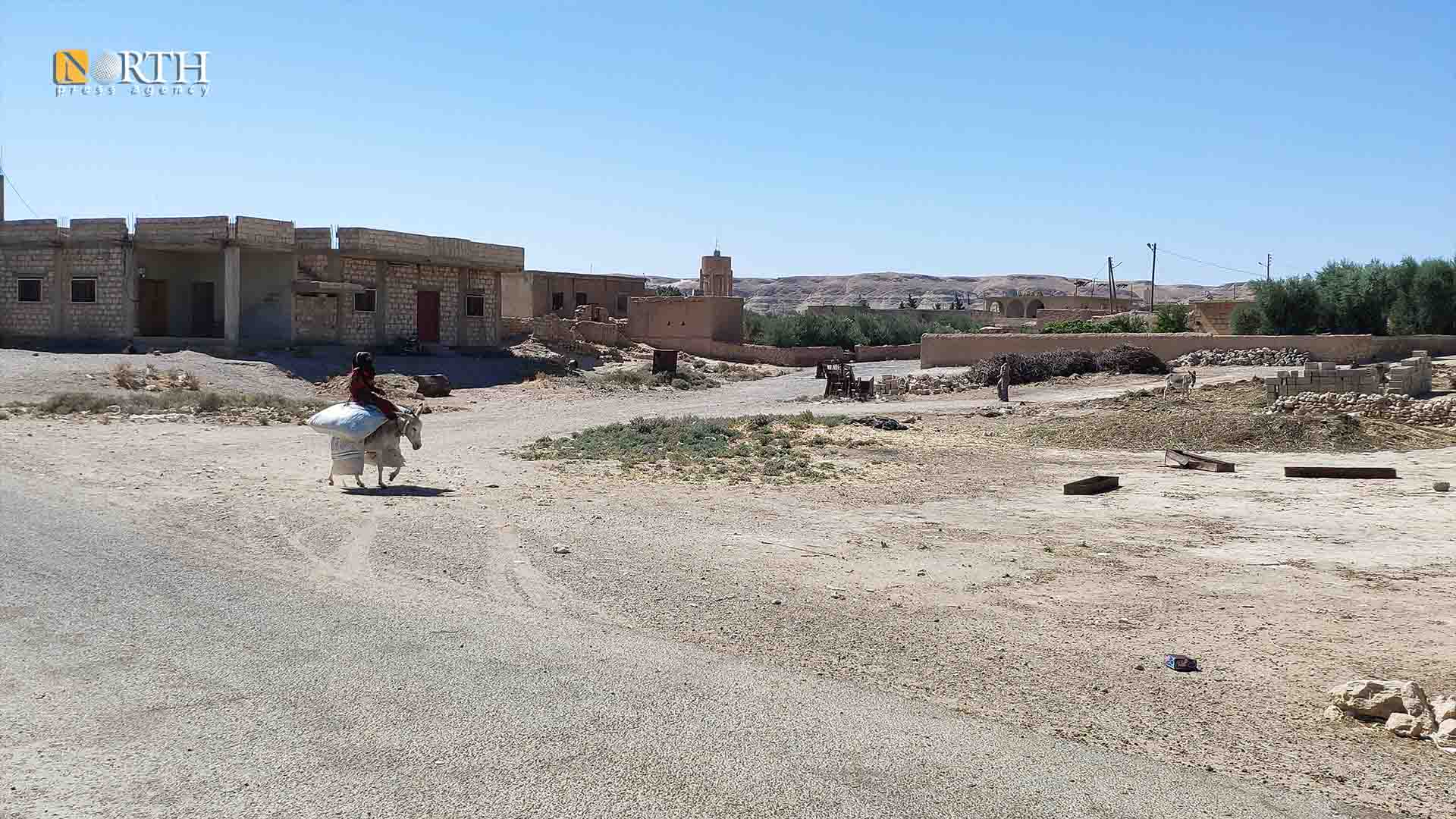Fuel crisis forces return to animal-based transportation in Syria’s Raqqa
RAQQA, Syria (North Press) – Most Syrian areas held by the Syrian regime have been suffering from an acute fuel shortage since mid-July.
The Syrian government held Sabkha sub-district in the eastern countryside of Raqqa has been witnessing a fuel crisis for months.
Additionally, allocations of petrol haven’t been received in Sabkha since August 15, which has raised the price of gasoline to SYP 5,000 per liter, fueling the growing discontent of the residents.
As a result of the high price of fuel, many residents of the area are forced return to horses and donkeys as a means of transportation instead of cars.
Hussein Jasem, a resident of Sabkha, said that he had parked his car in front of a petrol station more than a month ago, and he has not seen it since because of the lack of gasoline.
He added to North Press that the crisis in the eastern countryside of Raqqa has been exacerbated significantly, since the local gas stations have not received any fuel from the SADCOP fuel distribution company, unlike the rest of the Syrian governorates.
Jasem expressed his displeasure at the situation that forced him to buy a horse for 1,700,000 Syrian pounds.
He asked, “Why is gasoline available on the black market, while one liter cannot be obtained via a smart card?”
“If the situation continues like this, certainly, we will witness a mass exodus from this region after a short period of time due to government neglect,” Jasem said.
The fuel crisis reached its peak Damascus a month ago, and soon extended to Aleppo, Homs, and the coastal areas.
About a week ago, the management of Baniyas Refinery announced the start of the process of producing gasoline, but North Press sources confirmed that pumping the material will take time.
Baniyas Refinery is an oil refinery located north of the city of Baniyas on the western coast of Syria, and it is one of the only oil refineries in Syria in addition to the Homs refinery.
The Syrian government produces less than a quarter of its need, which amounts to more than 100,000 barrels of oil per day to cover the local market, through the Baniyas Refinery, according to economists.
Zayed Abduljalil, a resident of the village of Granada, said that his work requires daily travel between villages in the eastern countryside, because he sells his cows’ milk every morning.
He added that his business had been badly affected since the start of the fuel crisis and the lack of a vehicle to distribute the milk.
Abduljalil indicated that he had to buy a donkey and a horse to sell his cows’ milk. “I sold my horses three years ago to buy a car,” he said.
“What will remain of the return on my work if I keep buying a liter of gasoline for SYP 5,000?” he wondered.
Since August, gas stations in areas held by the Syrian regime are witnessing long queues of people waiting for their turn to fill their cars.
Qutaiba Waheb, the owner of the Sabkha fuel station, said that the loss of gasoline has paralyzed transportation between villages since SADCOP stopped sending fuel in August.
He added that SADCOP had promised for about a month to send allocations to the station, but they received nothing.
Wehb pointed out that the allocations for government vehicles have also stopped, as his station is the only one in the region designated for distributing fuel to those vehicles.
Wahb accused the Syrian government of not distributing gasoline in an equitable manner among the Syrian governorates.

